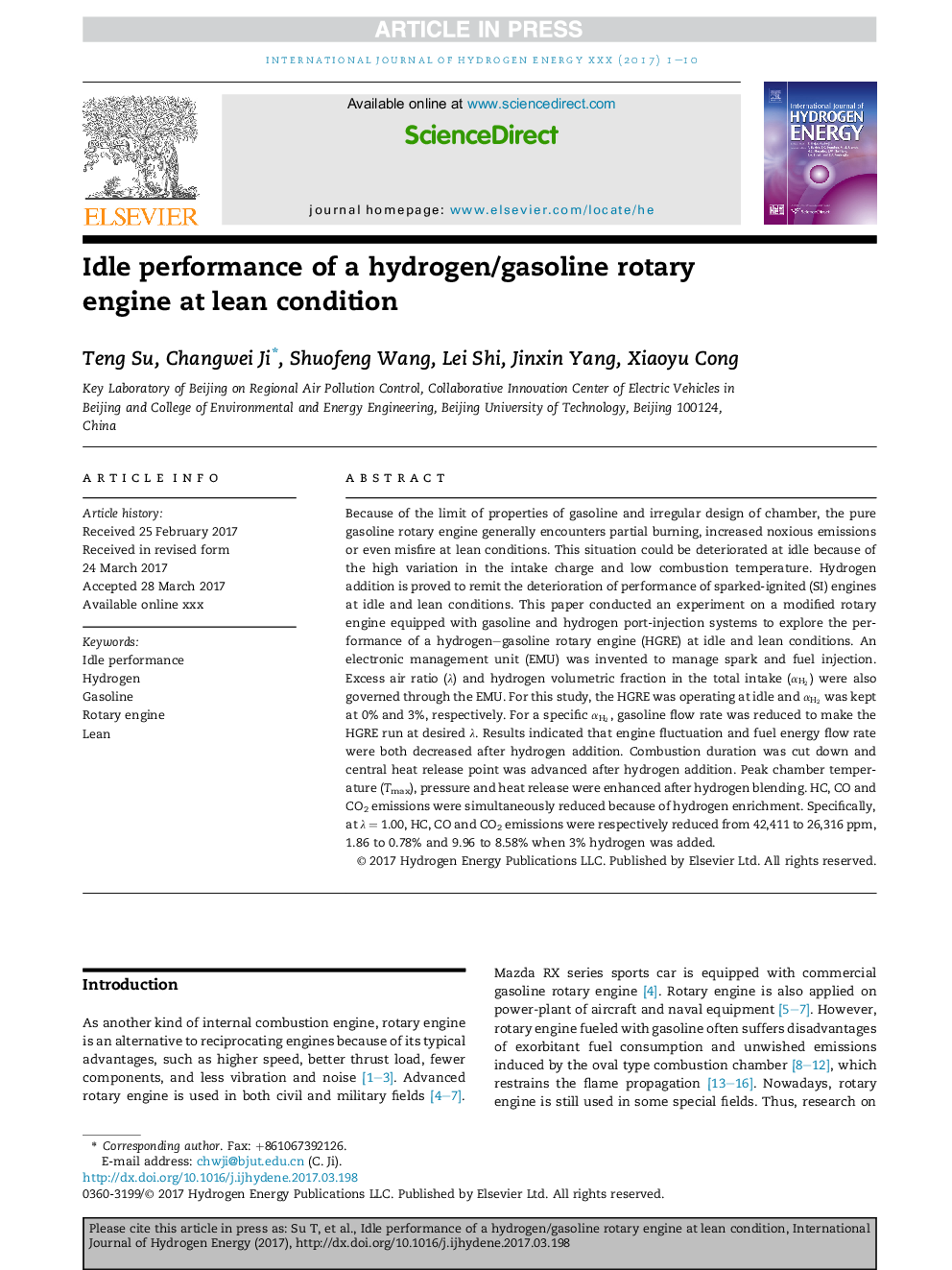| Article ID | Journal | Published Year | Pages | File Type |
|---|---|---|---|---|
| 5147792 | International Journal of Hydrogen Energy | 2017 | 10 Pages |
Abstract
Because of the limit of properties of gasoline and irregular design of chamber, the pure gasoline rotary engine generally encounters partial burning, increased noxious emissions or even misfire at lean conditions. This situation could be deteriorated at idle because of the high variation in the intake charge and low combustion temperature. Hydrogen addition is proved to remit the deterioration of performance of sparked-ignited (SI) engines at idle and lean conditions. This paper conducted an experiment on a modified rotary engine equipped with gasoline and hydrogen port-injection systems to explore the performance of a hydrogen-gasoline rotary engine (HGRE) at idle and lean conditions. An electronic management unit (EMU) was invented to manage spark and fuel injection. Excess air ratio (λ) and hydrogen volumetric fraction in the total intake (αH2) were also governed through the EMU. For this study, the HGRE was operating at idle and αH2 was kept at 0% and 3%, respectively. For a specific αH2, gasoline flow rate was reduced to make the HGRE run at desired λ. Results indicated that engine fluctuation and fuel energy flow rate were both decreased after hydrogen addition. Combustion duration was cut down and central heat release point was advanced after hydrogen addition. Peak chamber temperature (Tmax), pressure and heat release were enhanced after hydrogen blending. HC, CO and CO2 emissions were simultaneously reduced because of hydrogen enrichment. Specifically, at λ = 1.00, HC, CO and CO2 emissions were respectively reduced from 42,411 to 26,316 ppm, 1.86 to 0.78% and 9.96 to 8.58% when 3% hydrogen was added.
Keywords
Related Topics
Physical Sciences and Engineering
Chemistry
Electrochemistry
Authors
Teng Su, Changwei Ji, Shuofeng Wang, Lei Shi, Jinxin Yang, Xiaoyu Cong,
